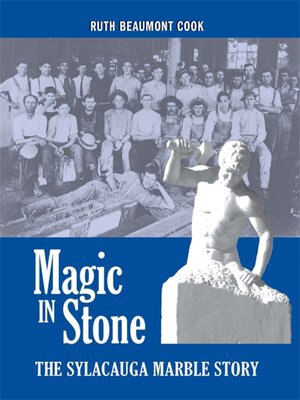
Sign up to save your library
With an OverDrive account, you can save your favorite libraries for at-a-glance information about availability. Find out more about OverDrive accounts.
Find this title in Libby, the library reading app by OverDrive.



Search for a digital library with this title
Title found at these libraries:
| Library Name | Distance |
|---|---|
| Loading... |
Sylacauga—Alabama's "Marble City"—is blessed with an abundant natural resource that nurtures both its economy and its cultural heritage. Thirty-five miles long, at least four hundred feet deep, and more than a mile wide, the Sylacauga Marble Belt yields crystalline white marble frequently compared to the Parian marble treasured by Greek sculptors and the Italian Carrara marble often chosen by Michelangelo. Artisans have quarried Sylacauga marble for tombstones since the early 1800s, and architects prized it for years as dimension stone for buildings like the United States Supreme Court. In the early 1900s, Giuseppe Moretti and Gutzon Borglum both chose this marble for magnificent sculptures.
When granite, better able to withstand industrial pollution, overtook marble as the preferred architectural stone in the 1930s, Sylacauga's quarry owners shifted their focus to the production of ground calcium carbonate (GCC), a fundamental ingredient in manufactured products from toothpaste, foodstuffs, and disposable diapers to paints, caulks, and sealants. Many cringe at the idea of blasting and grinding marble into fine powder, but GCC is a vital factor in the local economy. Thankfully, the Magic of Marble Festival, first held in 2009, has revitalized interest in the artistic value of Sylacauga marble, inspiring sculptors from across the United States and masters from Italy to apply their skills to cream-white blocks of this beautiful stone and share their creativity with thousands of residents and visitors each year.
This is the story of quarry pioneers, investors, artists, and artisans. It's also the story of their families, who fondly remember their lives along the edge of "the hole" that provided for them.







